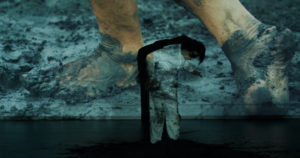Despite Turbulent Times: Hong Kong’s flowering of dance on film - Vancouver Ballet Society
- Home
- Reviews 2020 - 2023
- Despite Turbulent Times: Hong Kong’s flowering of dance on film

By Carla Escoda
This is a precarious time for Hong Kong dance artists. Massive anti-government protests in 2019 and the subsequent crackdown on freedom of expression followed by COVID lockdowns have created enormous uncertainty. But the art that comes out of crisis can be liberating, as a new series of powerful dance films, poised to reach global audiences, may prove.
After a decade of nurturing the local contemporary dance scene, the Hong Kong Jockey Club Contemporary Dance Series at the Hong Kong Arts Festival has gone out with a bang. For its tenth and final anniversary, a handful of dancemakers were invited to reimagine older work and create anew — all for the screen, in a bow to pandemic constraints.
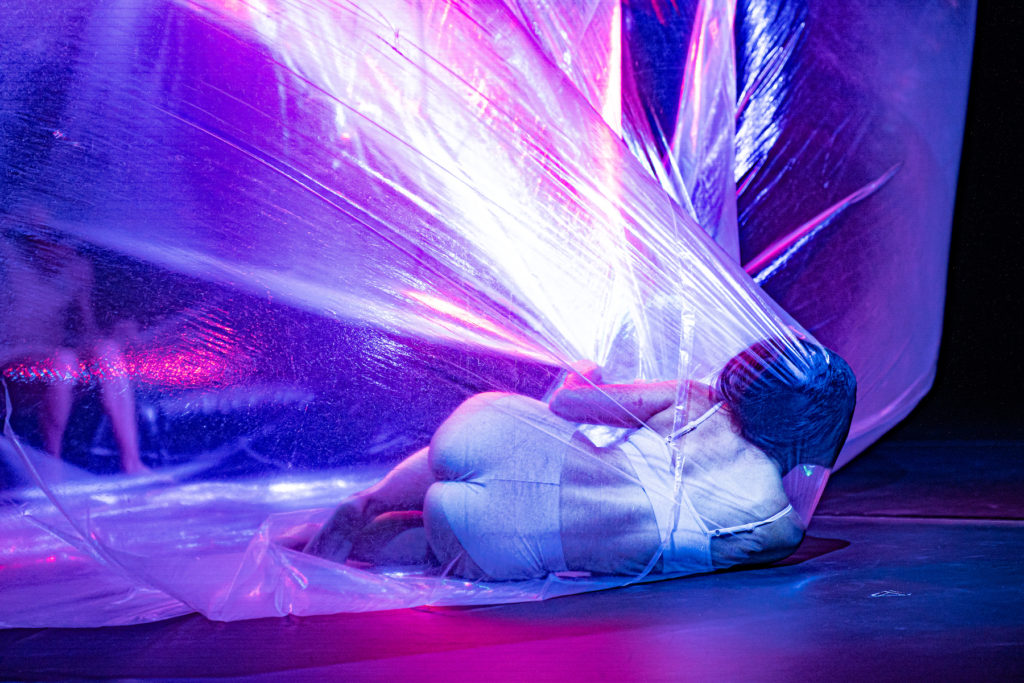
In 2018, or the beforetime — before the political unrest and before COVID — in the familiar setting of a black box theatre in Hong Kong, I watched choreographer Sudhee Liao encase herself and dancer Lo King-san in a collapsible plastic bubble. The nearly naked pair drifted together, then apart, swallowed up in folds of plastic. The effect was preposterous, almost humorous. In the film version of Hermetic Diode, with dancers lit in saturated colours, capricious camera angles amplify the terror of their situation. But watching the film streamed onto my laptop in a pandemic aroused contradictory emotions — living in a bubble can be suffocating, but also life-saving.
Put Out the Flame, created and performed by Tracy Wong and Mao Wei, was also reinvented for the screen with potent effect. Filming enhanced the sense of claustrophobia in a romantic relationship gone sour. In Wong and Mao’s virtuosic entanglements — effortless and precise — tenderness and cruelty merge; attempts at embrace dissolve as a partner slips out of reach; small gestures like the raising of a wine glass portend disaster. The dancers seem haunted by unseen forces beyond their control.
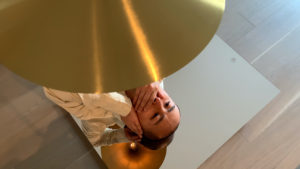
Themes of loneliness, fear, and loss struck raw nerves in three solos. In Waysoon Poon’s elegiac A Letter to Father, the choreographer wanders an austere landscape, sometimes balancing a dead tree branch in his arms or on his head with spiralling elegance. Along the way, he encounters Chan Chi-Kong singing a plaintive song (A Letter to Son) from the Cantonese naamyam tradition, a once-popular form, that Poon’s late father often listened to. Justyne Li’s harrowing Bloodline cuts back and forth between the choreographer trapped on a fenced rooftop and writhing on a studio floor as blood from an unseen source spatters on her. Self-Cens_rship finds choreographer Victor Fung secluded in an apartment, barely able to rise from a chair as he contemplates his anxious reflection in a glass table-top. A sculpted glass head sits on the table — a faceless, bloodless entity monitoring his every move.
Sadness and fear do not dominate the film series, however. Two collaborators who never met prior to or even during the making of their film find an uplifting connection in Dirty. Dever Chan in Hong Kong and Gong Zhonghui in Guizhou riff off the contradiction between “dé tǐ,” which means “decent” in Mandarin and sounds almost like the English word “dirty.” Their respective journeys take them to muddy fields, beaches, bathrooms, and train tunnels, their online conversation ranging from childhood memories to body image and societal pressures. Imaginative film editing superimposes giant video images of one dancer onto a wall behind the other, enabling them to dance together.
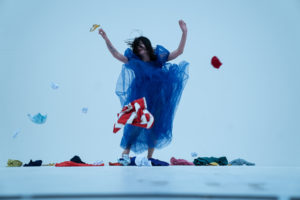
Two films satirize female objectification. In hou2 hou2 nam2, hou2 hou2 tiu3 (think critically, dance good), Blue Ka-wing seems doomed to flail about forever in a Disney princess dress to the Blue Danube Waltz. In Alice Ma’s Leg, a playful illusion turns dark when a pair of disembodied legs twirling upside down in the air mysteriously start to bleed.
Four dancers ask If the Body Matters, directed by Chloe Wong. This seems a compelling question in a pandemic, and in an era when democracy advocates in Hong Kong have disappeared, fled into exile, or been placed behind bars. Cyrus Hui talks about the impermanence of freedom while moodily reconnoitring a railway platform. Evains Lui contemplates leaving Hong Kong while negotiating a tight stairwell. Rain Chan wonders whether a freedom-fighter may find a semblance of freedom in jail while breakdancing in the bus lane on Chater Road — the site of past pro-democracy protests. Gabbie Chan scales a maze of tree branches alongside a lake, describing feelings of despair, frustration, and anger. The four dancers’ paths never cross. One can only hope they will one day soon.
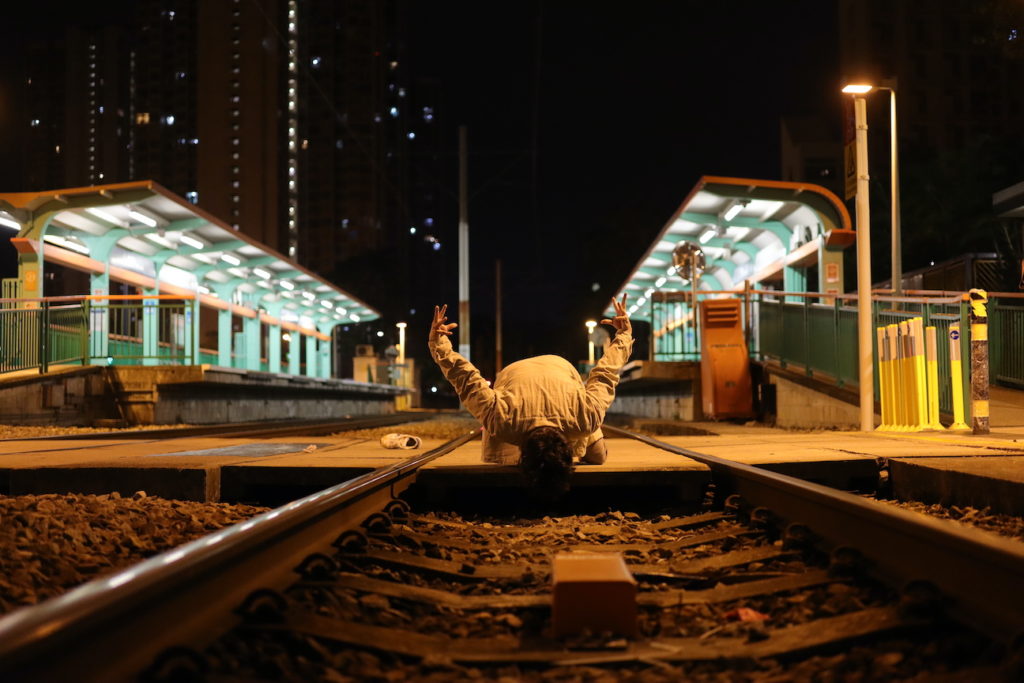
In a city-state hammered by political protests and COVID lockdowns, two of these dance films offer fertile commentary on bodily assaults. Hugh Cho, whose vocabulary is often inspired by martial arts, mocks state war-mongering in Ring, sending bumbling fighters into a boxing ring to have it out, armed with panama hats, hand sanitizer, a few Thai boxing moves and bad ballet training.
In contrast, Wong Tan-ki celebrates the heroic body in It’s Not My Body — Chapter III. The camera focuses on the precision isolations of his rippling chest, heaving back, and fluid arms, on his intrepid pistol squats and fluttering beaten jumps. Suddenly, he grabs his throat, pulls at his ribs and stomach muscles, as if attacked by an invisible enemy. Provoked by invisible punches to the jaw and head, he boxes the air and dispatches jagged roundhouse kicks. He flinches under a rapid-fire series of unseen slaps and punches but remains standing as the film credits roll. This brilliant display of resilience, of a fluid grace under pressure, evokes the resilience of a people who have endured repeated assaults on their way of life and the freedoms they have long valued.
